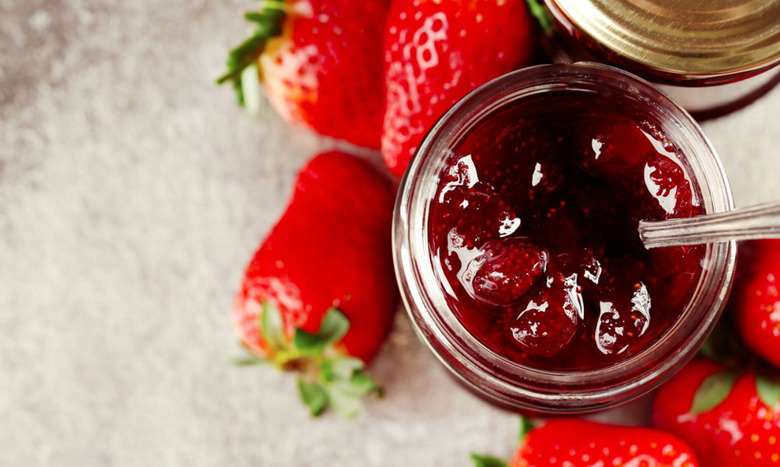What's The Difference Between Jellies, Jams, And Preserves?
We tend to use the words jam, jelly, and preserves more or less interchangeably. It comes in a jar, has fruit in it, and we spread it on toast. For all intents and purposes, they're pretty similar, with few noticeable differences. But ask anyone who does a lot of home preserving and they'll tell you that they couldn't be more different.
All jams, jellies, and preserves have the same three base ingredients: fruit, sugar, and pectin, a type of fruit-based fiber that turns to gel when the fruit is heated with sugar in water. The pectin makes it thick, the sugar makes it sweet, and the fruit makes it taste like something.
OK, what's the difference? It's actually pretty simple, and all comes down to the form that the fruit takes. In jelly, only fruit juice is used (think of how grape jelly doesn't have chunks of grape in it). In jam, the fruit is mashed or blended into a fine pulp, or at least completely crushed. And in preserves, the fruit is left more intact, in visible and palpable chunks.
There you have it!
